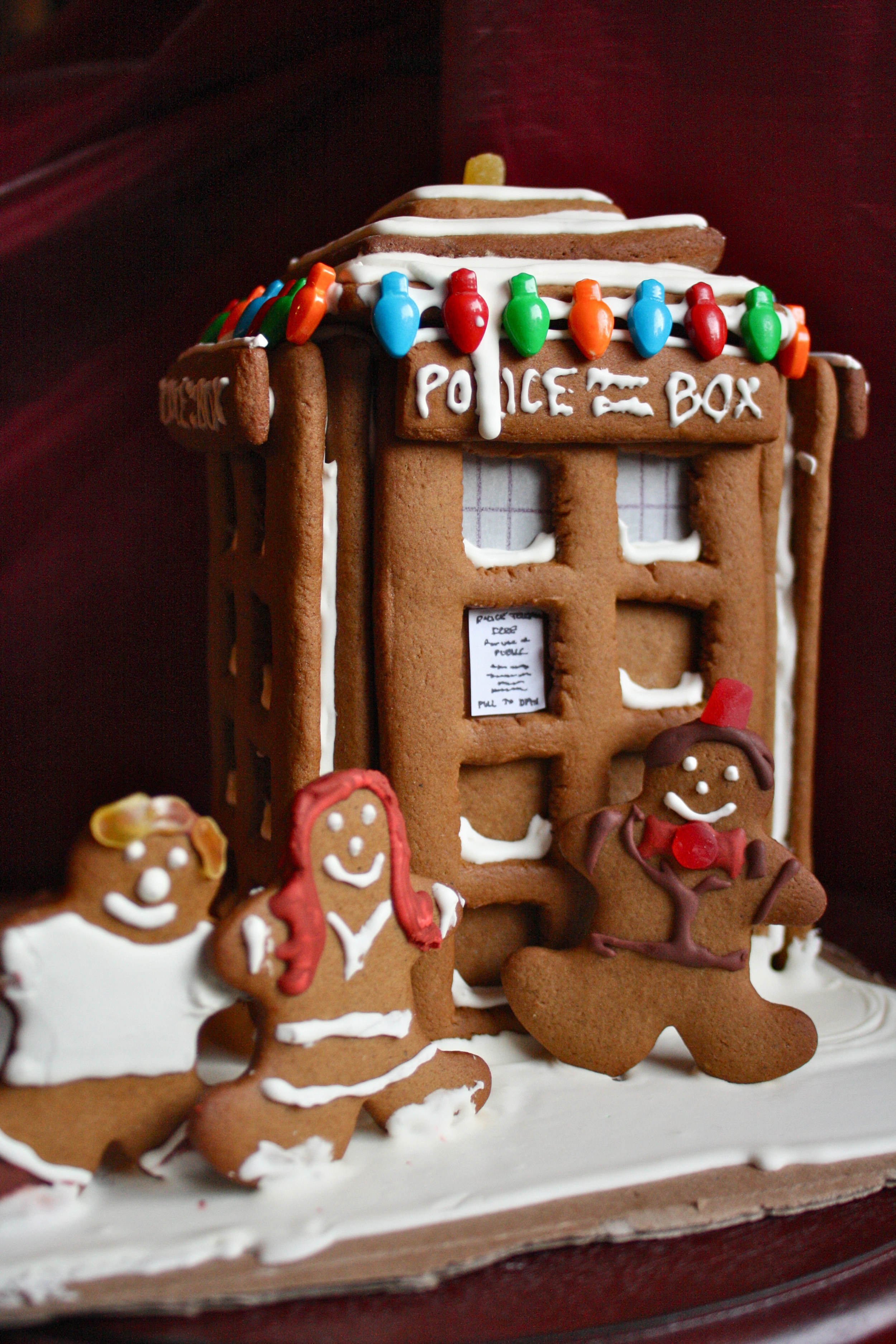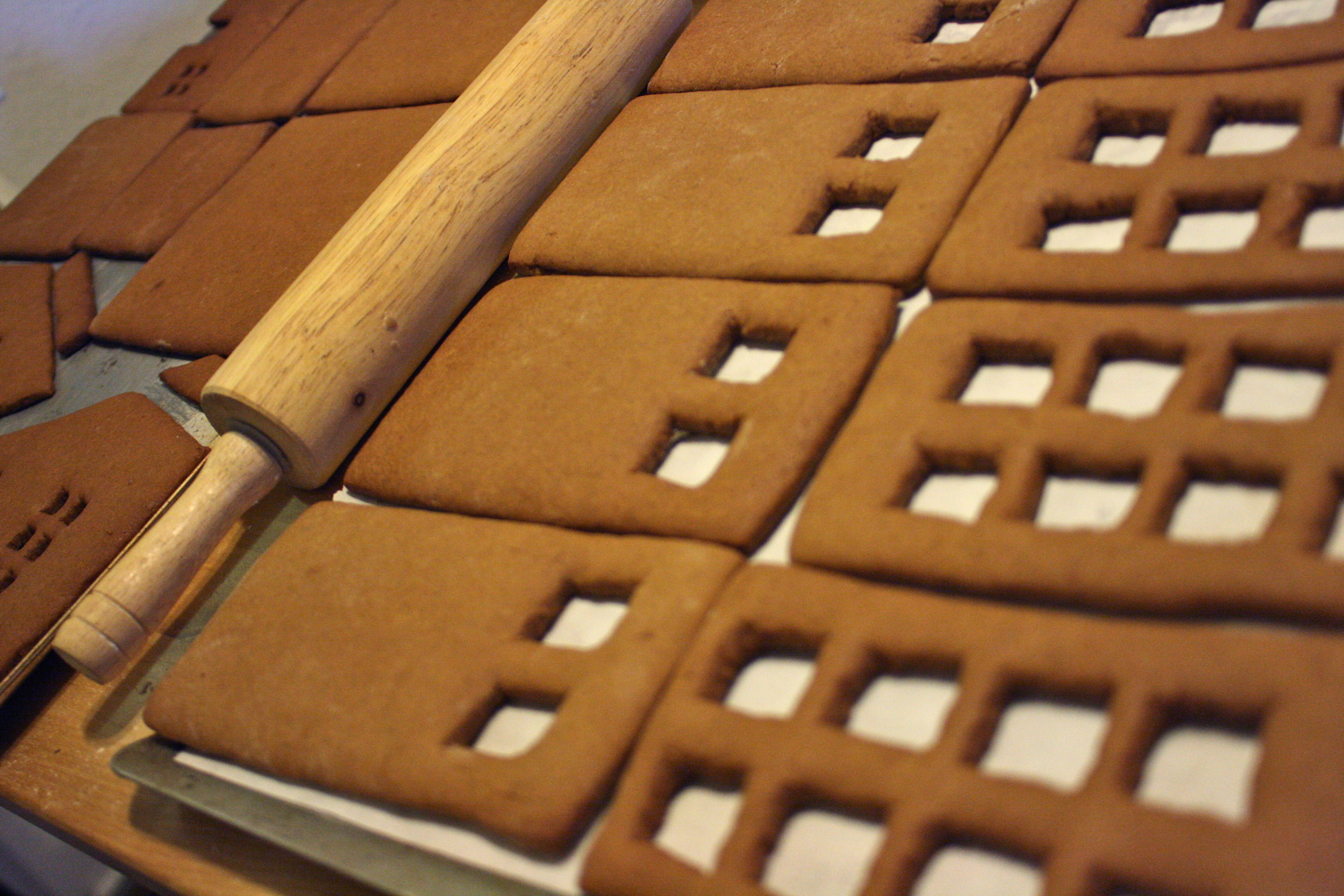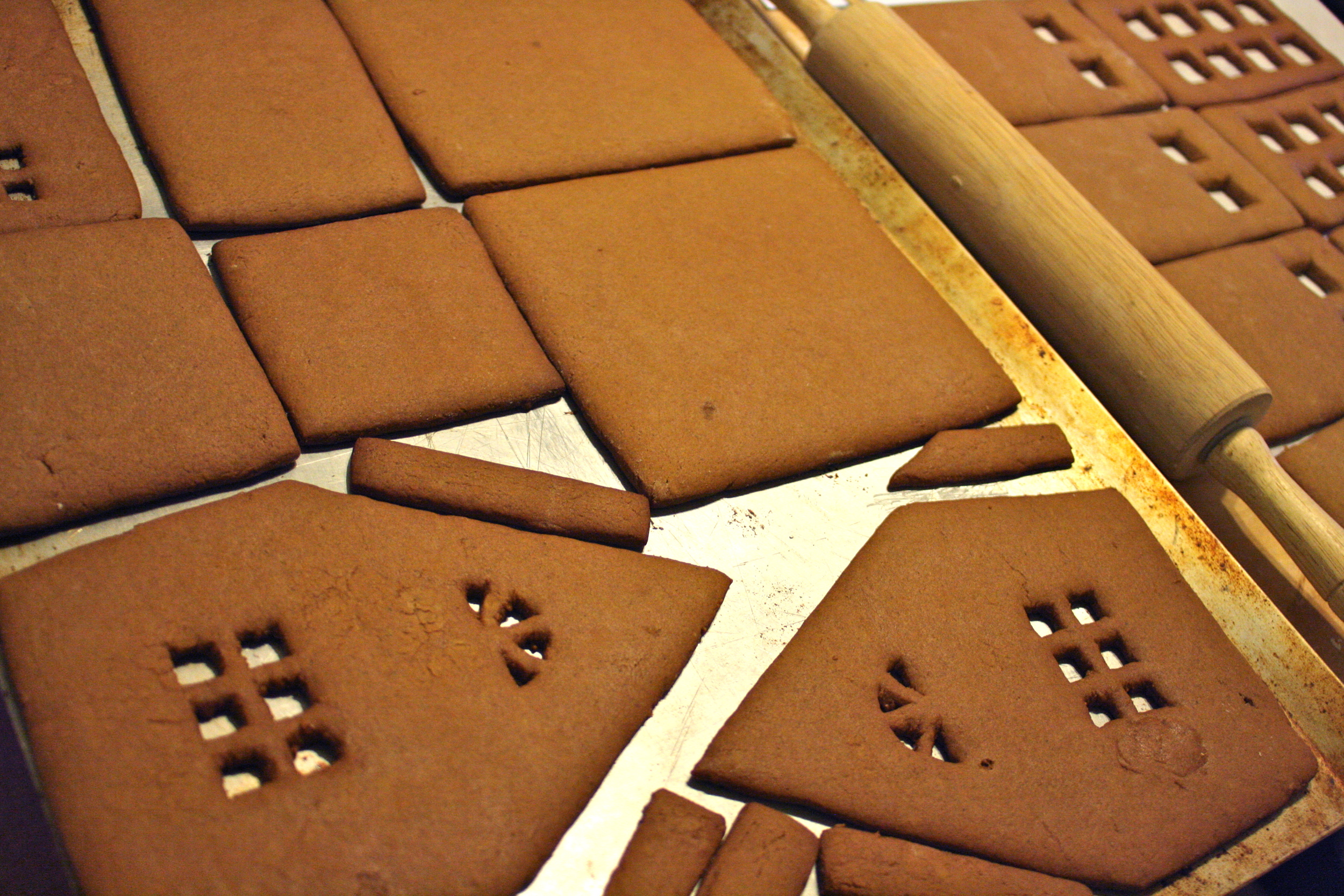How To: Build Your Own Gingerbread Tardis
The holidays are a time for traditions, and a few years ago, my roommate and I started one of my favorites: gingerbread houses. We grabbed a couple of the pre-baked kits from the craft store and spent an evening covered in frosting and candy and watching Christmas movies. We've stuck with those little kits for the past couple years, and they are a great option for a beginner, but this year I wanted to take it to the next level and build the whole thing from scratch.
I promised Rachel I'd handle all the materials, so she wouldn't have to do any more work than she would with those handy kits, and started researching gingerbread house recipes. Now, for those who are wondering why bother making a gingerbread house from scratch, here are a few benefits:
1) Bragging rights. Duh.
2) You're not restricted in what you can create. You can do a simple house, sure, but you can also make a cathedral, or a car, or a time machine. For one day, you can be an edible architect.
3) The smell - obviously, as you're baking, your whole home will smell like ginger and molasses, but because this is fresh gingerbread, you'll get a waft of that delicious scent every time you walk past your creation.
4) You can eat your leftovers. Enough said.
Now, that said, it's still quite a bit of work. So here are some tips, so you can learn from my experience and mistakes:
Divide the work up into several days so you don't have to spend a whole day just making gingerbread houses. I made the dough one day, baked my pieces the next, made the frosting a few days later, and, finally, put the houses together the day after that. The most work-intensive days were the baking and the constructing. I didn't spend more than half an hour making the dough or frosting.
The Dough
I looked at a lot of gingerbread dough recipes for this. You'll want something a little sturdier than your standard cookie dough.
I ended up using this Martha Stewart recipe, and I'm pretty happy with is, with one caveat: My pieces starting browning before they were completely hard, so I took them out of the oven, thinking they would harden up as I left them out for a few days. WRONG. They actually got softer. If this happens to you, just set your oven at a low temp (about 200-250°F) and bake the cooled pieces for 45-60 minutes, until the cookies are nice and hard. The low temperature will dry them out without browning any further.
The Template
Here are my cookie pieces all laid out:
I used Martha's help again for the gingerbread house template. You can find the template here. Note: It's missing the roof piece, for some reason. Just measure a rectangle slightly bigger than the top edges of the other pieces of the house so that you'll have a little overhang on the roof (great for icicles!)
I knew I wanted to make a gingerbread TARDIS, of Doctor Who fame, if I was making the effort to cut out my own pieces. I designed mine pretty quickly, and you could probably get one closer to the actual dimensions with a ruler and a pencil, but if you want to use mine, just download the images from here:
tardis wall 1
tardis wall 2
tardis roof
I printed out my template pieces and then cut them out in cardstock with an exacto knife. If you're careful, you could just cut out them out in paper, but then it's unlikely you'll be able to use them again next year.
Cutting the Dough
When cutting out the dough, learn from my mistakes: Keep your dough cold - refrigerate the dough you're not currently rolling out, and put scrap dough in the freezer between rolling, and DO NOT attempt to move your dough pieces after you've cut them. They'll inevitably become misshapen and you'll spend a bunch of time trying to smush them back into place.
Instead, roll out your dough on a piece of parchment or aluminum foil the same size as your cookie sheet. Cut out your pieces in the same placement that you want to bake them in - leave at least 1 1/2" space between pieces. Then just transfer the whole sheet to your cookie sheet. You might have to end up doing a few more batches than you would using a cut-and-move method, but it'll be worth it when you don't have misshapen pieces.
The house walls should be about 1/4" thick. The TARDIS walls can be thinner, since you'll be stacking them on top of each other before assembling. Mine were a bit too thick.
Assembling the House
You'll need a good royal icing to be the glue on your house. This is the recipe I used:
1 2-lb. bag powdered sugar
1/3 cup + 1 Tblsp. meringue powder
3/4 cup warm water
1 Tblsp. vanilla extract (or any oil-free extract/flavoring)
Mix the powdered sugar and meringue powder together. Add the extract to the warm water and then add it all to the sugar mixture. Using a mixer with a whisk attachment, whisk the mixture for several minutes until stiff peaks form. The icing stuck to your whisk should be stiff enough that it barely moves when you shake the whisk.
If you're making the icing ahead of time, you can put it in a tupperware container with a damp cloth or paper towel just under the lid and store in the fridge for up to a week. Otherwise, you can put about half the icing in a separate bowl and thin it out a bit to piping consistency (think toothpaste) with more water. Add a tiny bit at a time and mix until you have the right consistency.
Fill your preferred piping tool. I had some little decorating containers, but you can use piping bags, or even regular plastic bags with a tiny corner cut off, if you don't want to get fancy equipment. Put your house together on a cardboard base. You can use cans from your pantry to hold your pieces in place as they dry. Once your construction is done, it's time to decorate!
I did pick up a candy kit from the craft store - it came with gumdrops, and colorful candy lights and stars. I also colored some of my frosting for the details on my gingerbread people (The Doctor and The Ponds). Use a gel food coloring, if you can - it's more concentrated than the liquid stuff. I've been seeing it at grocery stores these days, but if you can't find it there it should be in the baking section of your local craft store.
Also, if you want to do snow, you'll want to thin out the frosting even more so that it's more spreadable. Outline the area with your piping frosting and then fill the area with the thinner frosting. And try not to make it too full, like I did on my roof (whoops).




